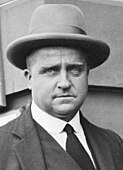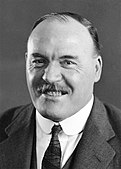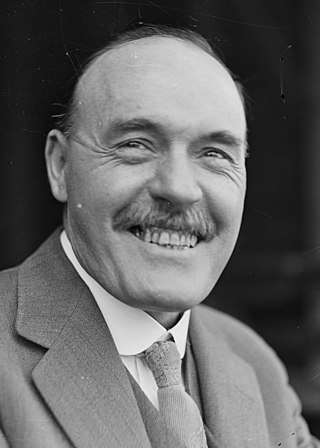
John Thomas Lang, usually referred to as J. T. Lang during his career and familiarly known as "Jack" and nicknamed "The Big Fella", was an Australian politician, mainly for the New South Wales Branch of the Labor Party. He twice served as the 23rd Premier of New South Wales from 1925 to 1927 and again from 1930 to 1932. He was dismissed by the Governor of New South Wales, Sir Philip Game, at the climax of the 1932 constitutional crisis and resoundingly lost the resulting election and subsequent elections as Leader of the Opposition. He later formed Lang Labor that contested federal and state elections and was briefly a member of the Australian House of Representatives.

Lang Labor was a faction of the Australian Labor Party (ALP) consisting of the supporters of Jack Lang, who served two terms as Premier of New South Wales and was the party's state leader from 1923 to 1939. It controlled the New South Wales branch of the ALP throughout most of the 1920s and 1930s. The faction broke away to form separate parliamentary parties on several occasions and stood competing candidates against the ALP in state and federal elections.

Sir Bertram Sydney Barnsdale Stevens, also referred to as B. S. B. Stevens, was an Australian politician who served as the 25th Premier of New South Wales, in office from 1932 to 1939 as leader of the United Australia Party (UAP).
The Australian Labor Party (Non-Communist), which operated from 1940 to 1941, was a breakaway from the Australian Labor Party (ALP), and was associated with the Lang Labor faction and former New South Wales premier Jack Lang.

Reginald Walter Darcy Weaver was an Australian conservative parliamentarian who served in the New South Wales Legislative Assembly for 28 years. Serving from 1917 in the backbenches, he entered the cabinet of Thomas Bavin in 1929 as Secretary for Mines and Minister for Forests until he returned to opposition in 1930. Following the success of the United Australia Party in the 1932 election, Weaver returned as the Secretary for Public Works and Minister for Health in the Stevens ministry.

John Joseph Gregory McGirr was an Australian politician who served in the New South Wales Legislative Assembly from 1913 to 1925, representing the Labor Party. He served as the party's leader for little over a month in 1923, during an internal dispute. He had earlier served as deputy leader and as Minister for Public Health under James Dooley.

George Cann was an Australian politician who served in both the Parliament of Australia and the Parliament of New South Wales. At state level he served as a minister in the governments of Jack Lang during the 1920s. He was a miner before entering politics.
Members of the New South Wales Legislative Assembly who served in the 32nd parliament held their seats from 1938 to 1941. They were elected at the 1938 state election, and at by-elections. The Speaker was Reginald Weaver.

The 1927 New South Wales state election to elect the 90 members of the 28th Legislative Assembly was held on 8 October 1927. During the previous parliament the voting system, which had been a form of proportional representation with multi-member seats and a single transferable vote, was changed to single member constituencies with optional preferential voting. Severe divisions occurred within the Labor Party caucus in the four months prior to the election and a caretaker government composed of the supporters of the Premier of New South Wales and party leader, Jack Lang was in power at the time of the election.

The 1930 New South Wales state election was held on 25 October 1930. The election was conducted in single member constituencies with compulsory preferential voting. The election occurred at the height of the Great Depression and was a landslide victory for the expansionary monetary policies of Jack Lang.
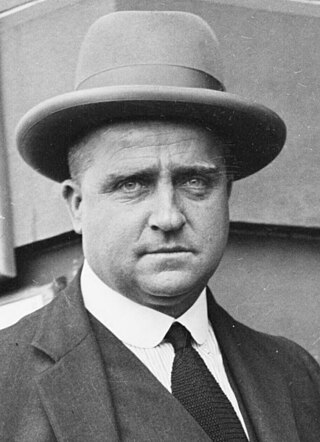
The 1932 New South Wales state election was held on 11 June 1932. This election was for all of the 90 seats in the 30th New South Wales Legislative Assembly and it was conducted in single member constituencies with compulsory preferential voting. It was a landslide victory for the UAP/Country Party coalition of Bertram Stevens, which had a majority of 42 in the Assembly.

The 1938 New South Wales state election was held on 26 March 1938. This election was for all of the 90 seats in the 32nd New South Wales Legislative Assembly and was conducted in single member constituencies with compulsory preferential voting.

The 1941 New South Wales state election was held on 10 May 1941. This election was for all of the 90 seats in the 33rd New South Wales Legislative Assembly and was conducted in single-member constituencies with compulsory preferential voting.

The 1953 New South Wales state election was held on 14 February 1953. It was conducted in single member constituencies with compulsory preferential voting and was held on boundaries created at a 1952 redistribution. The election was for all of the 94 seats in the Legislative Assembly.
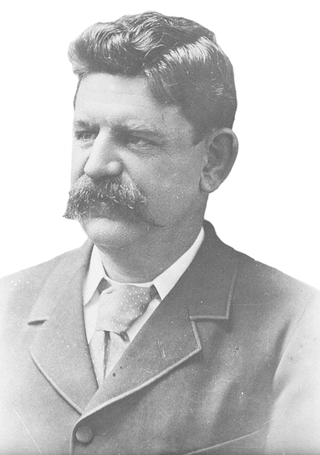
The McGowen ministry was the 34th ministry of the New South Wales Government, and was led by the 18th Premier, James McGowen. This ministry marks the first Labor ministry in the state of New South Wales.

The Lang ministry (1925–1927) or First Lang ministry was the 42nd ministry of the New South Wales Government, and was led by the 23rd Premier, Jack Lang. This ministry was the first of three ministries under Lang as Premier.

The Lang ministry (1927) or Second Lang ministry or Lang Reconstruction ministry was the 43rd ministry of the New South Wales Government, and was led by the 23rd Premier, Jack Lang. This ministry was the second of three ministries where Lang was Premier.

The Lang ministry (1930–1932) or Third Lang ministry was the 45th ministry of the New South Wales Government, and was led by the 23rd Premier, Jack Lang. This ministry was the third and final time of three occasions where Lang was Premier.

The Stevens–Bruxner ministry (1935–1938) or Second Stevens–Bruxner ministry or Second Stevens ministry was the 47th ministry of the New South Wales Government, and was led by the 25th Premier, Bertram Stevens, in a United Australia Party coalition with the Country Party, that was led by Michael Bruxner. The ministry was the second one of three occasions when the Government was led by Stevens, as Premier; and second of four occasions where Bruxner served as Deputy Premier.

The Stevens–Bruxner ministry (1938–1939) or Third Stevens–Bruxner ministry or Third Stevens ministry was the 48th ministry of the New South Wales Government, and was led by the 25th Premier, Bertram Stevens, in a United Australia Party coalition with the Country Party, that was led by Michael Bruxner. The ministry was the third of three occasions when the Government was led by Stevens, as Premier; and third of four occasions where Bruxner served as Deputy Premier.



